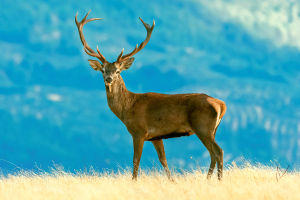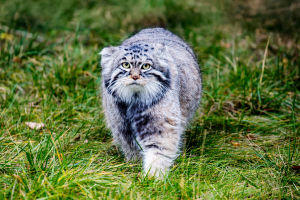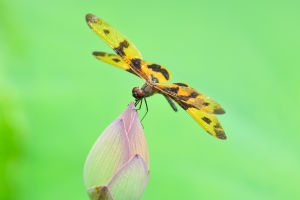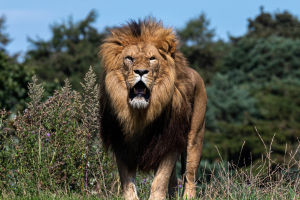
Deer are some of the most graceful creatures, often featured in children's stories and admired for their beauty. If you've ever wondered what makes deer so fascinating, you're in for a treat!
Today, let's dive into some cool and interesting facts about deer that will help us understand their world better.
Deer Habitats: Where They Live
Deer are incredibly adaptable creatures, but they prefer certain environments. They thrive in areas known as “edges,” which are typically places with a mix of woodlands and open meadows. These areas provide them with plenty of food, grass, and shelter. A group of deer living in these areas is called a herd. Isn't it amazing how they come together to form communities?
Male and Female Deer: The Difference
Did you know that male deer are called bucks, and they grow antlers? These antlers are fascinating because they fall off every winter and grow back the following year! While bucks are the ones with antlers, female deer, called does, don't have them. Sadly, many deer are hunted for their antlers. It's something to think about when we see a majestic buck in the wild.
Baby Deer: What Are They Called?
When a deer is born, it's called a fawn. Baby deer are born with spots on their fur, which helps them blend into their surroundings and stay safe from predators. These spots usually fade away as they grow older, but when they are born, they can take their first steps just 30 minutes after arriving into the world. It's impressive how quickly these little fawns are ready to start exploring!
How Big Are Deer?
Deer come in various sizes, depending on the species. Some weigh as little as 30 kilograms (around 66 pounds), while others can weigh up to 300 kilograms (about 660 pounds). The smallest deer is the Northern Pudu, which weighs only 10 kilograms, while the largest is the moose, which can tip the scales at a whopping 431 kilograms! Imagine seeing one of those towering over you!
Deer's Colorful Appearance
One of the most fascinating aspects of deer is their appearance. Depending on the species, deer can have spots, stripes, or solid colors on their coats. Most deer are brown, but some species have distinct markings. These markings are not just for looks—they help them blend into their environment and stay camouflaged. Pretty clever, right?
Deer Are Amazing Swimmers
Deer are known for their swimming skills. They're strong swimmers, able to cross rivers and lakes with ease. But that's not all—they also have incredible hearing and an exceptional sense of smell, which helps them detect danger from miles away. However, their eyesight is not as sharp. In fact, some people mistakenly think that deer are practically blind, but in reality, they just see the world in a very low resolution.
Are Deer Like Antelope?
While deer may look similar to antelopes, they are actually quite different. Antelope horns are permanent, whereas deer antlers shed each year. Male deer use their antlers to fight for dominance and attract females. These antlers can grow into many points, which is pretty amazing!
Where Are Deer Found?
Deer are found on every continent except Antarctica and Australia. In Africa, the only species of deer is the red deer, which lives in the Atlas Mountains. If we think about it, it's incredible how these animals have adapted to so many different environments across the world.
What Do Deer Eat?
Deer are herbivores, meaning they mostly eat plants. Their diet consists of fresh grass, leaves, fruits, fungi, and lichens. They are very particular about what they eat and are known to be selective grazers. During the winter months, they might dig through the snow to find food like tree branches and bark. It's pretty amazing how they survive the cold by using their hooves to uncover hidden food.
Deer in Asia: The Largest Herds
Did you know that some of the largest deer herds are found in India and Nepal? These fertile plains are home to a variety of deer species, including the water deer, red deer, and the elusive barasingha. These regions are a paradise for deer, offering rich forests and wetlands that make for the perfect living conditions.
Deer Don't Build Nests
Unlike some other animals, deer don't build nests or dens. Instead, they rest in comfortable, safe spots, often under low-hanging tree branches or in tall grass. They're very strategic about where they sleep, always staying close to food sources to ensure survival. During winter, they might move to denser forests to protect themselves from the cold.
Winter Survival and Food Storage
Deer don't store food for the winter. When the snow isn't too deep, they use their hooves to uncover grass and moss beneath the snow. In deeper snow, they turn to tree branches and twigs to fill their stomachs. They're resourceful, making the best of what's available to them.
Deer and Humans: A Growing Challenge
As we continue to build and expand our cities, deer are finding themselves without proper habitats. When forests are cleared for development, deer often end up in our gardens or backyards. It's important for us to understand their needs and respect their natural spaces to maintain a healthy coexistence.
Conclusion: The Fascinating Life of Deer
Deer are incredible creatures with so many amazing traits and survival tactics. From their adaptability in different environments to their strong swimming skills, deer are truly fascinating animals. The next time we see a deer in the wild, let's take a moment to appreciate all the unique qualities that make these creatures so special. What's your favorite deer fact, Lykkers? Let us know!


